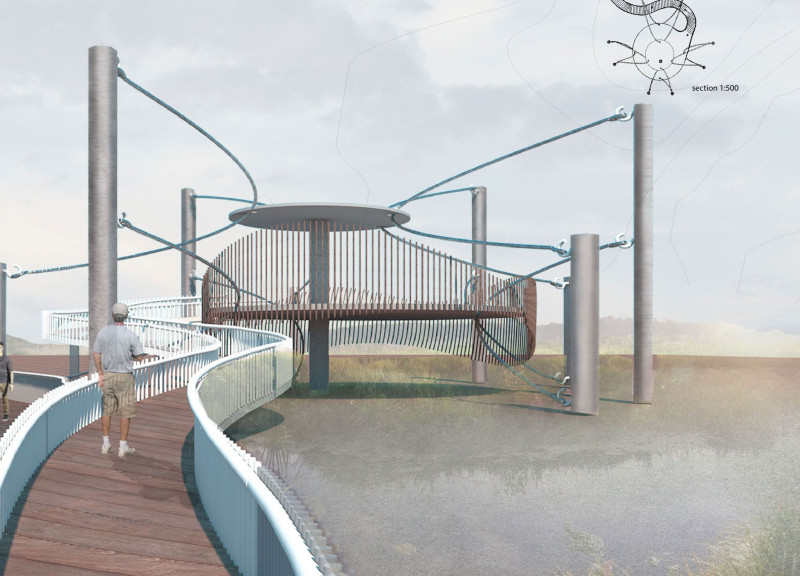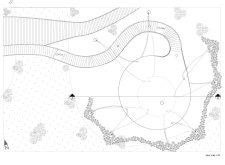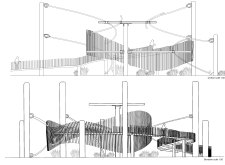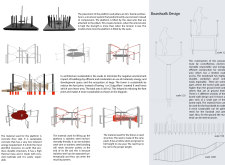5 key facts about this project
The Oculus Tower serves as an observational structure designed to provide an intimate viewing experience of flamingos in their natural habitat. Located in an ecological area, it features a circular design that offers visitors panoramic views while being mindful of the surrounding environment. The goal is to enhance user interaction with wildlife through careful integration into the landscape.
Structural Design
Standing at a height of 3 meters, the tower employs a unique structural approach that uses tension to lift the viewing platform. Steel cables connecting to vertical columns create a lightweight design that reduces the footprint of the structure. This method conserves ground area and decreases any visual impact on the landscape, aligning with principles of sustainable architecture.
Materials Selection
Durability and ecological responsibility characterize the materials chosen for the tower. The platform features a concrete floor slab, which provides stability and requires low energy for production. This choice supports long-term use. In addition, stainless steel is used in the lifting mechanism, contributing to the overall environmentally friendly design and ensuring that the structure remains robust over time.
User Interaction
The boardwalk surrounding the tower introduces varying elevations, allowing for pathways that encourage exploration of the landscape. Some sections climb above ground level, while others follow the terrain closely. This design invites visitors to engage directly with the environment, enhancing the overall experience while prioritizing the preservation of local wildlife.
Natural Aesthetic
The fencing around the tower is constructed from reed structures, reinforcing a natural look that blends with the surroundings. This renewable material supports the project's ecological goals, creating a design that is both functional and visually cohesive. Handrails made of palm reeds and jute rope add charming details, enhancing both safety and the overall sense of connection to nature. Each design feature is thoughtfully integrated to promote harmony with the habitat while fulfilling practical needs.






















































